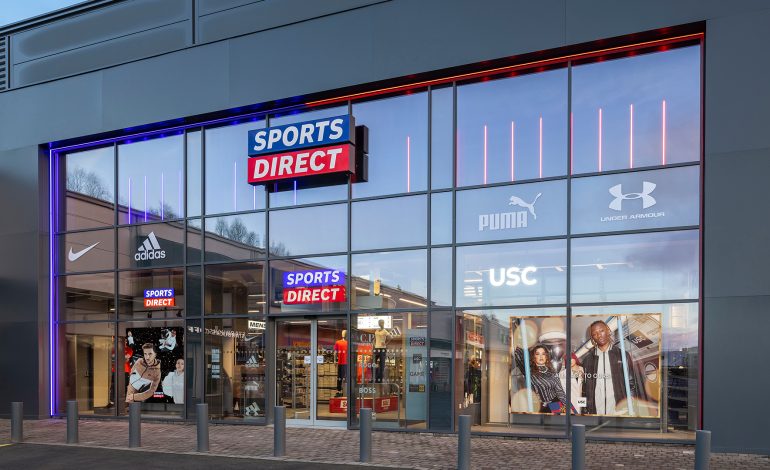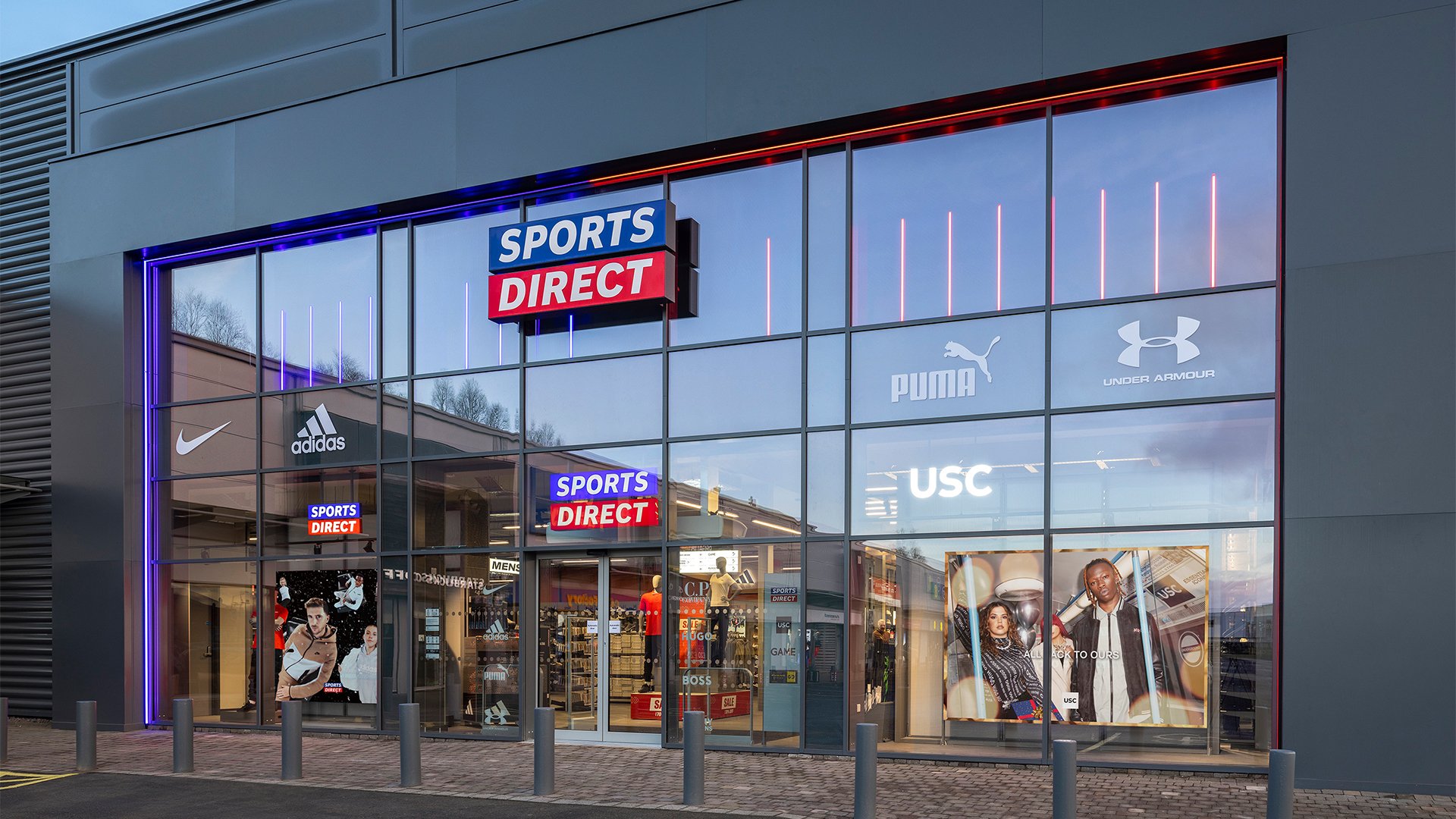Sports Direct: The Rise and Evolution

Sports Direct is well-known as one of the most popular names in the UK’s high street and an e-commerce platform. From a little shop, it has turned into a giant in retail business. With its ads for selling sports clothes at a low price. Which is a big pull for a large audience, and a collection of different public thought about the store. This piece deals with the chronicle of sports direct, the way it runs its business. The items it sells, the consumers’ perception, the unremitting problems. The going-to-be-future of the company in a manner that makes it easier to understand. It against the changing world behind the company’s sources and means.
From a Single Shop to a Retail Empire
At the end of the 80s, a small sports shop was the starting point. What is now known simply as Sports Direct. During the years the company had grown in size on the back of a huge wave of internal developments and acquisitions. Which were at sometimes very aggressive. The core of their business was to each time purchase a real cheaply sold off or detained retail brand. Transcribe inventory and pricing to a central location, and negotiate with the producers’ better prices for a high volume. Low margin sales direct to the consumer. Thus becoming a competitive force that could challenge both the small sports chains. And the big department stores with a wide range of products.
This policy has not only helped the company maintain its leadership in different consumer goods categories. But also create quite a large and valued network of physical stores. Lately, the institution has been heavily spending money on the digital side. To the development of online infrastructure, while also trying to keep the balance. Between the number of traditional shops and e-commerce growth.
Business Model: Low Price, High Volume
The business model adopted by Sports Direct is based on cost leadership. By using the model of low cost and high volume, the company is able to draw a high number of price-sensitive customers and continue to make a considerable profit. There are a few news elements in this retailing model:
- Leading approach to direct discounting: When items are heavily discounted or a “clearance” sign is involved, the whole discount-hunting image is created, thus the store increases its visits and website clicks.
- Assortment with Private Label and National Brands: Sports Direct distributes a mixture of its own brands, which are highly priced, and internationally renowned sports brands. The private label products are usually more profitable and hence, it gives the retailer some flexibility in pricing.
- Centralized distribution: Through cooperating in buying and conveying, the company cuts production costs and at the same time makes the quicker movement of goods possible between the stores and web outlets.
- Omnichannel retailing: The creation of a chain of physical stores, an e-commerce business, and the provision of the click-and-collect option, besides regular promotions, results in the store not only getting repeated visits but also a lot of cross-channel purchases.
The model is especially resistant to economic crises and post their bargains through the pandemic-of-premium-as-shopping’s-low period.
Product Range
The Range of Manufactured Goods offered is Huge and their Prices are Competitive. Among the products offered by Sports Direct are all different things of the sports world. Running shoes, workout clothes, team uniforms, jackets and coats, casual shoes, accessories, and sport gear to some extent. The stocks are being spilled more from the area of the everyday. Less from the very technical or the niche and mostly into the mainstream sports and leisure activities.
The benefits of the product mix are:
- You get a lot of options from which you can choose what fits you best and at the price range that you can afford.
- The luxury brands are introduced to the public market through the regular discounts and other offers which is a great help.
- The stores are big and well laid out that the products are easily seen, so it is convenient for the customer to compare the prices.
However, the weak points lie in the quality consistency of the house-brand products. Lack of variety in products dedicated to professionals and sportsmen. It does not change the fact that technic following or a particular. Branch of sport the retailer still is not able to give the customer. What he is looking for ignore specialist retailers.
Customer Experience and Brand Perception
There is a wide range of customer experiences when it comes to Sports Direct. A huge number of buyers say that the store is their favorite option. Because it is very easy on the wallet, it has a wide range of products. The savings are immediate, something you can already feel. The excitement for the well-known brand to be sold at a fraction of the price is predominant for the seekers of the cheapest price.
On the contrary, Sports Direct’s stores and the method of marketing are being that way blatantly and too much focusing on discounting making them not appealing to every. In a way, various aspects constituting satisfying consumer feedback are the following:
- Getting the right product for an everyday price.
- Some customers might be uninterested in the store layouts and the signs are very confusing.
- The company’s digital platform is being brought up with every year’s betterment. As the business is pouring money into the app and website functionalities, the consumer from the comfort of their home with the same prices as in-store gets the product at the doorstep.
All in all, Sports Direct is concentrating on dominating the market with a low-price strategy and an abundance of available products instead of being the destination for high-end luxury in-store services or the go-to place for expert-level advice.
Digital Transformation: Catching Up with Modern Retail
It was just like other retail companies that Sports Direct had to go through the burden of the inefficiencies stemming from the massive physical spaces and the virtually exploding e-commerce sector. In order to address these issues, the retailer has chosen to heavily invest in its e-commerce platform, update its fulfillment centers, and establish an omnichannel approach including click-and-collect service and flexible returns. Some of the most important items in the Digital Agenda are as follows:
- Meeting the always-on-time promise and keeping transparent data flow between the stores and online shelf inventories.
- Making the mobile buying and app point to the key conversion and loyalty drivers through new features.
- Using shopping pattern information for targeted selling and promotion on customer level.
Those decisions are essential to the company since customers who follow the trend are now expecting the easy and upscale experience, they get through modern online shopping by Sports Direct.
Competitors and Market Position
The areas in which Sports Direct competes are the following:
- Specialist sports retailers (e.g. stores that offer detailed expert advice).
- Big-box and department stores with sports sections.
- Pure-play e-commerce retailers and marketplaces offering competitive pricing.
- Brand-owned channels (major sports brands selling directly online).
Sports Direct’s position as the cheapest in pricing the market makes the company a long-time market player but rivals persistently impact margins and are changing customer requirements concerning availability and service.
Controversial Cases and Business Governance
Over the years, Sports Direct (and its parent companies at various times) has been the target of public attention and controversy. The scrutiny consists of complaints about work ethics, the governance and the culture of steep discounting. Strong-willed examinations and media investigations have uncovered topics. Such as working conditions, wage levels and dispute resolution practices in the warehouses.
By all means, the company’s response has been to start governance. Labor relations and transparency related projects which, nevertheless, are measures that normally require a longer time to become effective. As for the general public and the company’s image, such matters still impact the perception. The human resource department, and as a result the dealing with the suppliers.
Sustainability and Ethical Considerations
The purchasing habits of the modern consumer are influenced by sustainability concerns, particularly by the young people. Sports stores come under constant criticism and pressure to:
- Lower carbon footprints, including more sustainable logistics and stores.
- Bring to light the whole sourcing process and labor rights and conditions in the supply chain.
- Provide goods that are more durable and/or recyclable.
Sports Direct could get more eco-friendly but is still expanding its eco footprint. Brands that are price-conscious may find it hard to meet higher environmental and social standards. With lower-cost sourcing, but aligning. These two methods is more and more of a need in the future to keep a good brand image.
The Future: Opportunities and Challenges
In the future, the future of Sports Direct will most likely reflect several things:
- Price leadership and service: The representation of the brand’s affordability (price-wise) and its simultaneous increase in its digital and physical shops’ appeal will help retain both the “deal hunters” and the ease customers.
- Brand reputation enhancement: The extension of the target market to shopper groups other than price-conscious ones through sustained investments in working practices, governance, and sustainability communication.
- E-commerce and logistics processes improvement: The growth of online shopping brings about the need for quicker order dispatching and inventory accuracy maintenance, plus a clear and integrated process for returning unsatisfactory goods.
- Product differentiation: The new segments of the market could be acquired by the enhancement of the brand’s private label quality and by selling specific specialist performance lines.
- Strategic partnerships and brand deals: Getting involved in exclusive partnerships that give the market niche or working with celebrities whose endorsements would make the product look more appealing to the new audience would all contribute to refreshing the brand.
Notable risks lie in fluctuating wholesale prices, transport and energy costs on the increase, and the intensification of competition from the agiler e-commerce startups as well as from the more vulnerable-sized omnichannel retailers.
Information that Consumers Should Be Aware of
For those who are considering buying at Sports Direct, here are some useful pieces of advice:
- Check different prices Sports Direct is usually good at offering lower prices but you still need to look in at the brand pages and other shops when there are promotions.
- For everyday sports clothes and shoes, it is a good budget product quality; if you are shopping for the latest in high-tech, look for specialist stores.
- If your main concern is the price, then keep an eye on online-only bargains and seasonal clearance sales.
- Depending on the country, they can vary but the delivery waiting time and what products they return are no longer a big issue still online purchases, and hence it will be a good idea to check them Tween tics.
Conclusion
The bare-bones and yet very functional-working business model of Sports Direct. Which is the offering of many goods at really low price. Then selling them in large quantities, is the reason behind the great success. The high popularity of the company among the value for money-oriented customers. Still, the very low prices and the volume of products. Sold could be the disadvantages in disguise. Because of the high demons that will not stand behind “the cheapest good” at all prices. People are starting to turn towards what is this brand about and if it is “a brand that is extremely cheap. Due to the fact that they do not pay labor properly” or “a brand that is very cheap but also fair”.
But according to the position that the market is in, Sports Direct is going to be sources for the most effective, sport articles and the most affordable deals for the next two months. On the other hand, for the arriving and those in-residencies in the market, its elevation will be described as an object of research, where they can see how profit-oriented retail sector is adjusting to a world where naturally, convenience, ethics, and brand incidents (over price) take the center stage.








